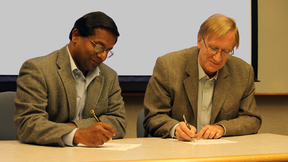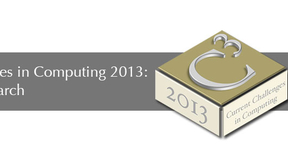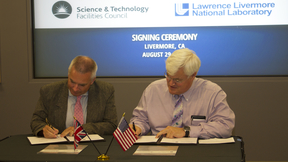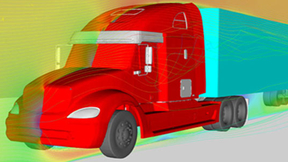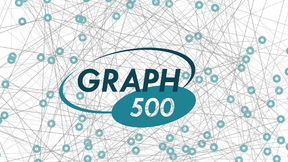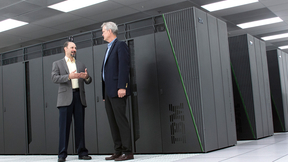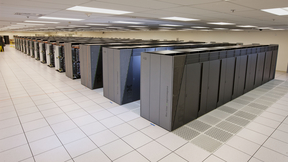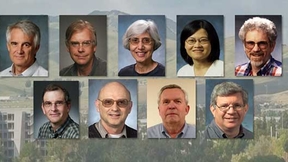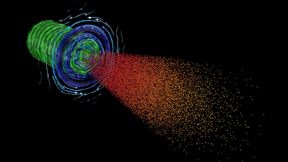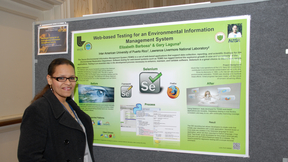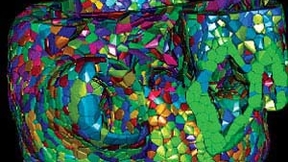Back
The Laboratory will evaluate the topological data analysis software produced by Ayasdi for tackling big data problems under a memorandum of understanding (MOU) signed at LLNL Thursday.Ayasdi's Insight Discovery platform uses Topological Data Analysis (TDA) combined with an ensemble of machine learning techniques to enable data scientists, domain experts and business people…
Lawrence Livermore National Laboratory in partnership with Intel and Cray, today announced a unique high performance computing (HPC) cluster that will serve research scientists at all three institutions and provide a proving ground for new HPC and Big Data technologies and architectures. "As the name implies, Catalyst aims to accelerate HPC simulation and big data…
The latest generation of high performance computers has the potential to transform the biomedical field in ways unthinkable just a few years ago.That was the theme that emerged from the "Current Challenges in Computing 2013: Biomedical Research" conference, or CCubed, held earlier this month in Napa. Sponsored by IBM with support from the Laboratory, the meeting brought…
Lawrence Livermore National Laboratory's High Performance Computing Innovation Center (HPCIC) and the Science and Technology Facilities Council (STFC) in the United Kingdom will collaborate to expand industry's use of supercomputing to boost economic competitiveness in the two countries. The U.S. Department of Energy and The Department for Business, Innovation & Skills…
The Lawrence Livermore National Laboratory launched an aggressive initiative to boost American industry's global competitiveness on June 30, 2011, by opening the High Performance Computing Innovation Center (HPCIC) in the Livermore Valley Open Campus (LVOC). Using expertise acquired through decades of applying HPC to challenges in a broad range of fields, the HPCIC has…
LLNL's 20 petaflops Sequoia supercomputer has retained its No. 1 ranking on the Graph 500 list, a measure of a system's ability to conduct analytic calculations -- finding the proverbial needle in the haystack. An IBM Blue Gene Q system, Sequoia was able to traverse 15,363 giga edges per second on a scale of 40 graph (a graph with 2^40 vertices). The new Graph 500 list was…
Livermore, CA -- The Vulcan supercomputer at Lawrence Livermore National Laboratory is now available for collaborative work with industry and research universities to advance science and accelerate the technological innovation at the heart of U.S. economic competitiveness.A 5 petaflops (quadrillion floating point operations per second) IBM Blue Gene/Q system, Vulcan will…
The Turbulence Analysis and Simulation Center (TASC) in the Computational Engineering Division (CED) is now open for business and ready to serve Laboratory research programs and to work with partners in industry. The TASC also recently launched its new external Website . The first-of-its-kind center at LLNL, the TASC will focus on high-performance simulation and analysis…
Computer scientists at Lawrence Livermore National Laboratory (LLNL) and Rensselaer Polytechnic Institute have set a high performance computing speed record that opens the way to the scientific exploration of complex planetary-scale systems. In a paper to be published in May, the joint team will announce a record-breaking simulation speed of 504 billion events per second…
In opening his Director's Distinguished Lecturer Series presentation Wednesday, Gordon Bell joked that when it comes to the security badge requirements for getting on site "nothing has changed since my first visit in 1961." But when it comes to high performance computing at LLNL, much has changed thanks to the computing technology revolution Bell helped bring about. Bell's…
The National Nuclear Security Administration (NNSA) today announced that its Sequoia supercomputer at Lawrence Livermore National Laboratory (LLNL) has completed its transition to classified computing in support of the Stockpile Stewardship Program, which helps the United States ensure the safety, security and effectiveness of its aging nuclear weapons stockpile without…
The California Energy System for the 21st Century (CES-21) Board of Directors convened their latest public meeting at Livermore Valley Open Campus (LVOC) last Thursday. Following welcoming remarks by Computation Associate Director Dona Crawford and comments by CES-21 Executive Director Steve Larson, the board began the process of reviewing different aspects of the pending…
Nine Laboratory scientists have joined the ranks of 14 other researchers by being named members of the Lab's Distinguished Members of Technical Staff (DMTS) for their extraordinary scientific and technical contributions to the Laboratory and its missions as acknowledged by their professional peers and the larger community. Maya Gokhale of the Computation Directorate, Ernst…
The fellowship named for pioneering Lawrence Livermore computational scientist George Michael is now accepting applications from exceptional PhD students whose research focus is on high-performance computing applications, networking, storage, or large-scale data analysis using the most powerful computers currently available. Recipients of the George Michael Memorial HPC…
LIVERMORE, Calif. -- Researchers at Lawrence Livermore National Laboratory have performed record simulations using all 1,572,864 cores of Sequoia, the largest supercomputer in the world. Sequoia, based on IBM BlueGene/Q architecture, is the first machine to exceed one million computational cores. It also is No. 2 on the list of the world's fastest supercomputers, operating…
With strong support from Lawrence Livermore, the 2013 edition of the Richard Tapia Diversity in Computing Conference concluded the largest and most diverse meeting of its 12-year history in Washington, D.C. Over the last dozen years, the conference has served as a catalyst for bringing researchers and professionals from populations underrepresented in the computing…
HPCwire, a leading news and information portal for the HPC technologies, has named Computation Associate Director Dona Crawford as one of its "People to Watch" in 2013. The annual list "pays tribute to an exemplary group of the best and brightest minds of HPC, whose hard work, dedication and contributions we believe reach beyond the spectrum of high performance computing…
WHAT: Lawrence Livermore National Laboratory will present its groundbreaking supercomputer simulation capability to realistically and rapidly model a beating human heart to better understand fatal disease. Developed in collaboration with IBM on one of the world's fastest supercomputers at Lawrence Livermore, such powerful simulations could have considerable impact on the…
If the annual supercomputing (SC) conference proves anything, it is that high performance computing technology changes with stunning speed. But then, the purpose of SC is to galvanize the forces that bring about that change. SC12, held in Salt Lake City, was no exception. Sequoia, the 16.3 petaflops (quadrillion floating point operations per second) IBM BlueGene/Q system…
Livermore, Calif. -- Lawrence Livermore National Laboratory (LLNL) researchers have used the Stack Trace Analysis Tool (STAT), a highly scalable, lightweight tool to debug a program running more than one million MPI processes on the IBM Blue Gene/Q (BGQ)-based Sequoia supercomputer.The debugging tool is a significant milestone in LLNL's multi-year collaboration with the…

